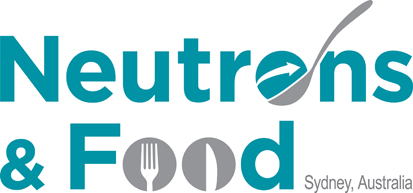Speaker
Description
Milk is a main component in many food products in a variety of cultures around the world. Research and development in milk over the past five decades has enabled increased shelf-life, better flavor and accurate control over fat size and concentration. Milk is a water-based colloidal system, comprised of soluble proteins, casein micelles (CMs), ions and fat globules (FGs). The addition of a coagulant, the enzyme chymosin, to this system brings about aggregation of the CMs via hydrolysis of the -casein molecules which make up the surface of the CMs, effectively trapping the FGs together with some liquid whey, resulting in a complex soft matter system called cheese. The structure and organization of the CMs and FGs in milk have been addressed by many invasive experimental methods probing scales from 0.1nm to 1µm, yielding conclusions via two-dimensional images. Furthermore, the structure of cheese probed by these invasive methods (CLSM, cryo-SEM, etc.) could introduce artifacts to the unperturbed structure. In view of this, it is desirable to utilize a technique that can be non-perturbing and can access the micron-scale structure of cheese. This technique is ultra-small angle neutron scattering (USANS), which enables us to probe length scales from 0.1μm to 20μm, effectively providing information on the size, surface characteristics, three-dimensional organization, scattering length density and concentration of the main components in milk and cheese. Our USANS studies were carried out on the BT-5 thermal neutron beam port at the NIST Center of Neutron Research, Gaithersburg, Maryland. Scattering results from homogenized milk revealed smooth-surfaced FGs with mean diameters of 540nm, polydispersity of 40% and concentration of 3.28%. Utilizing the contrast matching technique with homogenized milk samples and overlapping the signal with scattering data from skim milk, CMs were found with mean diameters of 120nm, polydispersity of 16% and concentration of 1.5%. When homogenized milk was coagulated with chymosin for one hour, CMs were found to be organized in one-dimensional aggregates having an average thickness of about two CMs. Correlations of coagulation time with aggregate thickness and surface roughness displayed aggregate sizes doubling (for two hours), then slightly decreasing (for three hours), while the surface became smoother as coagulation time increased. During skim milk coagulation, smooth aggregates of two CM thickness formed quickly (within 1 hour), continuing to double in thickness while becoming rougher (within 2 hours) - possibly attributable to the absence of FGs. Our results suggest that the USANS technique is a promising method to probe micron-scale structure of commercial milk in natura, as well as milk coagulated via enzymatic activity, since our results pertaining to diameter and concentration are in agreement with those in the literature. Pros and cons of this technique with regard to applications in milk and cheese studies will be highlighted and data analysis methods discussed. A comparison to the USAXS technique will also be offered. Characterization of mean sizes, polydispersity’s and independence in the organization of CMs and FGs, can contribute to optimization in the manufacture of healthy milk-based food products.

